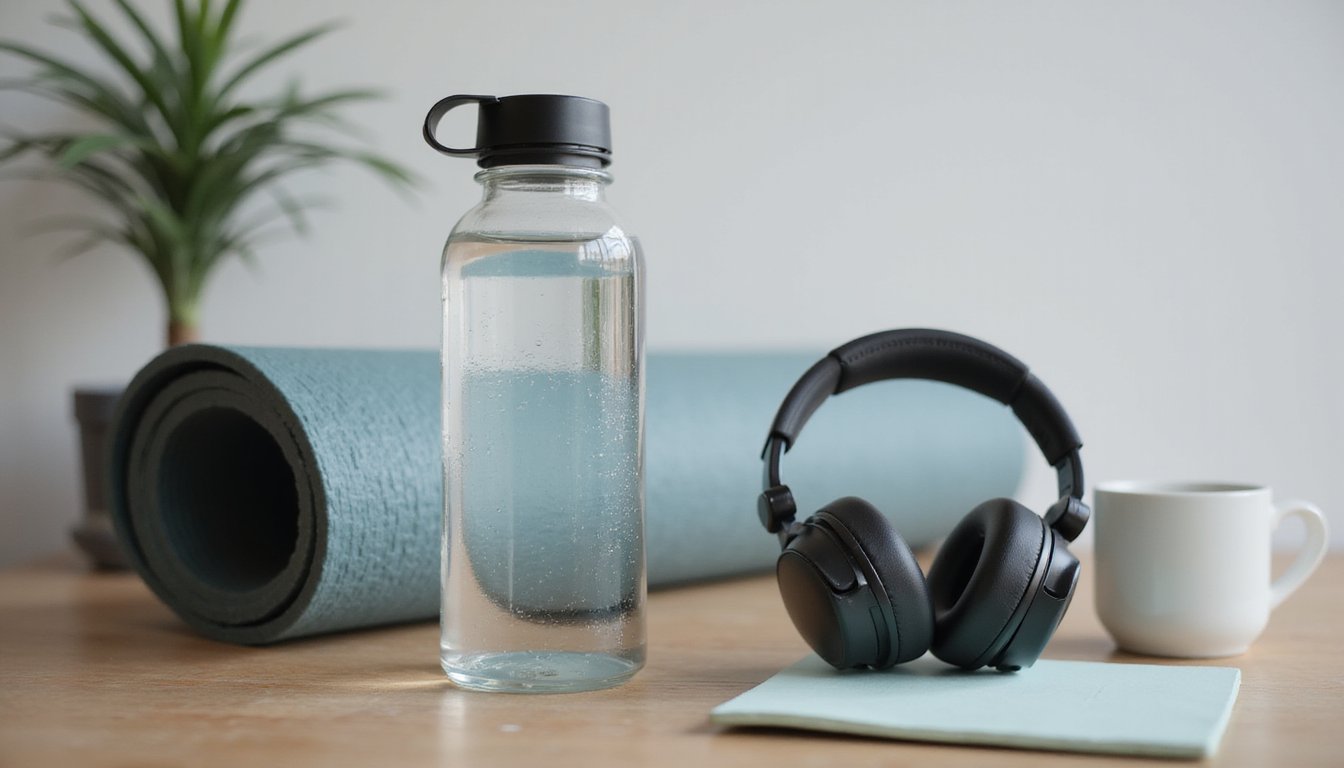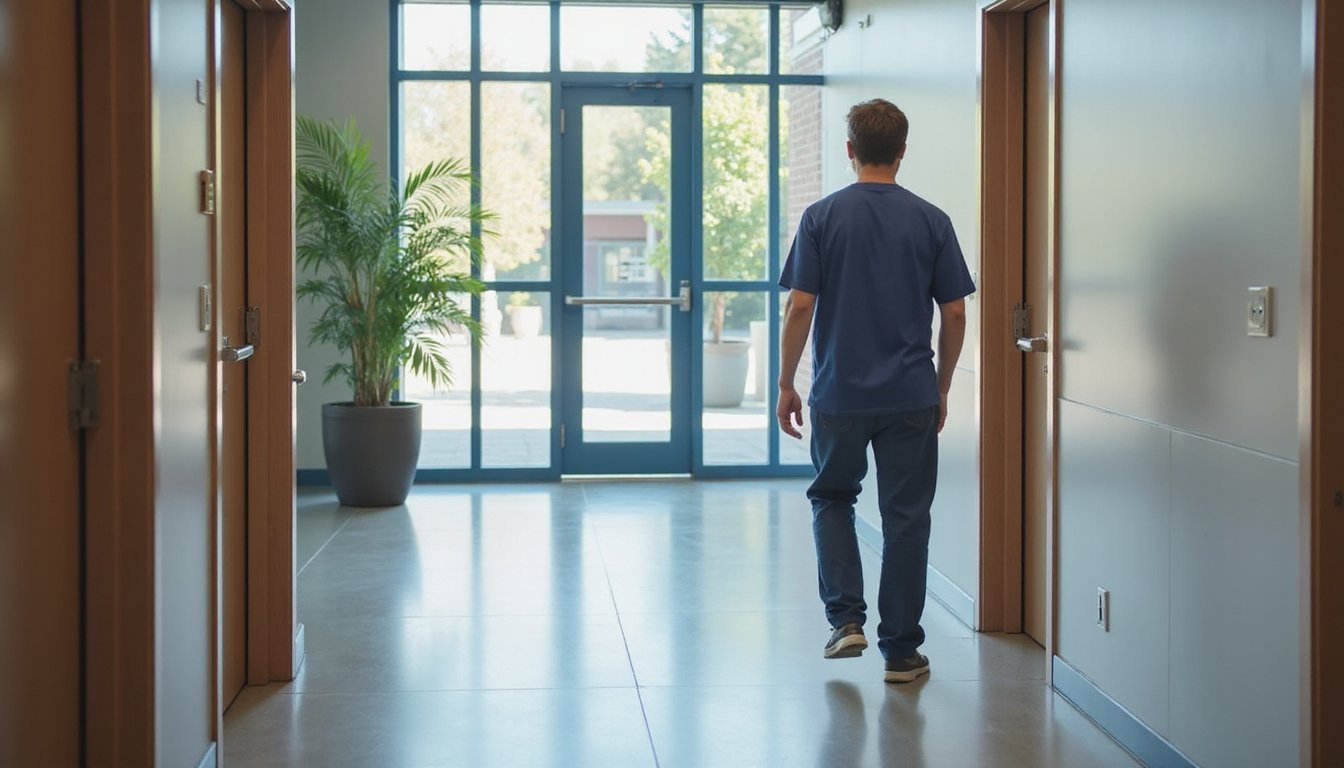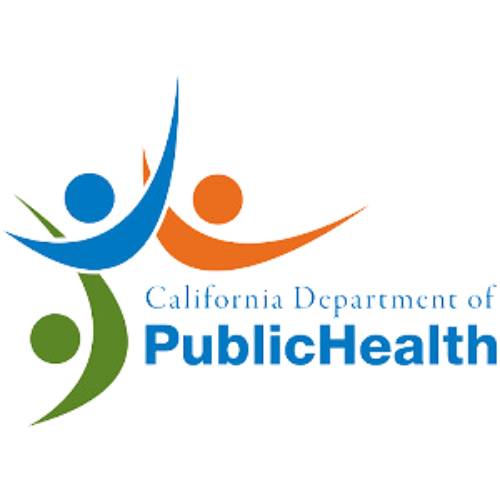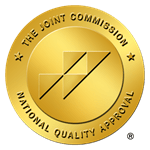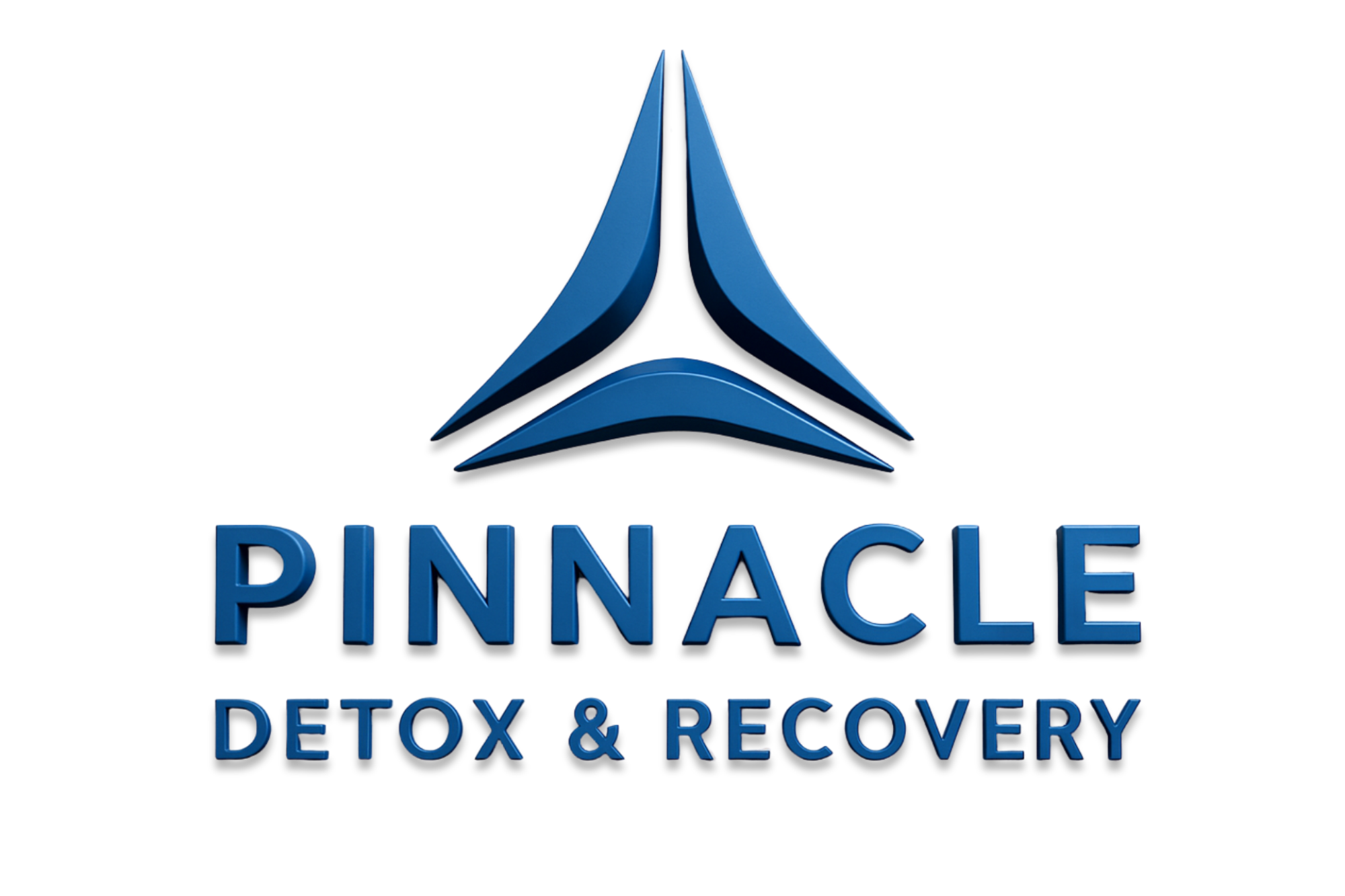After rehab, you'll navigate
emotional fluctuations and developing coping skills during your first few months, then solidify healthier routines between 3-6 months as mental clarity increases. Consider
medication-assisted treatment, medications like buprenorphine and methadone reduce overdose risk by up to 76% while stabilizing brain chemistry and eliminating cravings. Combine MAT with
cognitive behavioral therapy, support groups, and individual counseling to address underlying patterns. Build a strong
relapse prevention plan, establish
daily routines, and connect with peer recovery networks. The strategies below will help you maintain progress and thrive throughout each stage of your journey.
Understanding Your Recovery Timeline and What to Expect
Recovery from addiction unfolds in predictable stages, though the pace and intensity vary from person to person. Life after rehab typically begins with
early abstinence, where you'll experience
emotional fluctuations as withdrawal symptoms resolve and new habits form. During the first few months, you'll work on building essential
coping skills while your brain chemistry gradually stabilizes. Physical symptoms often improve within two weeks, but psychological challenges, including cravings, anxiety, and mood swings, may persist longer.
Aftercare programs and continuing care provide crucial structure during this progression. Between three and six months, you'll solidify healthier routines and strengthen your support network. A
relapse prevention plan helps you identify triggers and maintain the coping strategies you've developed throughout your recovery journey.
Regular attendance at support groups provides accountability and community as you navigate the action stage of recovery. As you progress through mid to long-term recovery,
cognitive function becomes more refined and you'll experience increased mental clarity.
Advanced recovery focuses on maintaining sobriety and personal growth.
Understanding that progress isn't linear helps you navigate setbacks with resilience and maintain momentum toward
lasting change.
Building a Strong Foundation With Medication-Assisted Treatment
Medication-assisted treatment offers you a proven pathway to stability by addressing the biological aspects of opioid use disorder while you rebuild your life. When you combine
FDA-approved medications like
buprenorphine or methadone with counseling and behavioral therapies, you're considerably reducing your risk of relapse and overdose, studies show up to a 76% reduction in
overdose risk at three months. MAT doesn't substitute one problem for another; it provides the neurological balance you need to apply recovery skills, manage cravings effectively, and focus on
long-term healing. These medications work by crossing the blood-brain barrier and attaching to
opioid receptors, allowing you to function normally without the dangerous highs and lows of illicit opioid use. Your treatment plan should be tailored to your specific needs with input from you, your prescriber, and your healthcare team, as
patient-specific approaches consistently demonstrate better outcomes. Research examining real-world treatment pathways found that
buprenorphine or methadone demonstrated reduced risk of overdose and serious opioid-related acute care use, while other treatment approaches showed no significant risk reduction at both 3 and 12 months of follow-up.
How MAT Reduces Cravings
When cravings feel overwhelming and threaten your hard-won progress, medication-assisted treatment (MAT) offers a scientifically validated pathway to regain control. Through
stabilization of brain chemistry, medications like methadone, buprenorphine, and naltrexone normalize disrupted neurotransmitter levels caused by opioid use disorder.
The
mechanisms of craving reduction vary by medication:
| Medication |
Action |
Benefit |
| Methadone |
Full agonist blocking withdrawal |
Eliminates physiological cravings |
| Buprenorphine |
Partial agonist |
Reduces cravings without producing highs |
| Naltrexone |
Antagonist blocking receptors |
Prevents rewarding effects of opioids |
These targeted interventions deliver
improvements in treatment outcomes, including higher retention rates, reduced relapse risk, and better engagement with counseling. MAT's
inclusive approach addresses addiction as a chronic medical condition, empowering you to rebuild your life with confidence. MAT works by targeting the brain's opioid receptors, which are responsible for both the euphoric effects of opioids and the
uncomfortable feelings of withdrawal.
Preventing Overdose Through Medication
Non-medication approaches actually increase overdose death risk by 77% due to complete tolerance loss. Integrating
medication-assisted treatment into your relapse prevention plans creates a safety buffer during vulnerable moments. At one year,
buprenorphine shows the lowest rate of overdose-related hospitalizations at 10.23%. For long-term recovery success,
MAT provides both psychological stability and physiological protection, giving you space to build sustainable recovery while dramatically reducing life-threatening risks. Despite proven effectiveness,
only 10.38% of patients diagnosed with opioid use disorder actually receive MAT prescriptions within twelve months of diagnosis. Methadone and buprenorphine
reduced overdose risk by 38% and 34% respectively in Connecticut's 2017 study of opioid-related deaths. MAT combines
FDA-approved medications with counseling and behavioral therapies to address both the physical and psychological aspects of opioid use disorder.
Combining MAT With Therapy
Recovery builds strongest when you pair medication with professional therapy support. Research confirms that combining medication-assisted treatment (MAT) with
behavioral therapies produces better outcomes than either approach alone. When returning home after rehab, this integrated approach helps you manage
triggers, address
co-occurring mental health conditions, and stay committed to treatment.
Roughly 74% of patients receive MAT with minimal therapy, yet those engaging in
regular counseling show notably lower discontinuation rates during the critical first six months.
Essential components of combined treatment:
- Cognitive behavioral therapy helps you identify and change thought patterns driving substance use
- Recovery support groups provide peer connection and shared coping strategies
- Individual counseling addresses depression, anxiety, and trauma affecting your progress
- Family therapy rebuilds relationships and strengthens your sober lifestyle foundation
- Motivational Enhancement Therapy strengthens your commitment to recovery and helps maintain treatment engagement
This extensive approach reduces
relapse risk while developing sustainable recovery skills.
Medication manages physical withdrawal symptoms while therapy addresses the psychological and behavioral aspects of addiction. The
first 6 months after starting buprenorphine represents a critical window when medication discontinuation is most likely to occur, making consistent therapy engagement especially important during this period.
Creating Your Personalized Relapse Prevention Plan
Creating a personalized
relapse prevention plan empowers you to take control of your recovery by preparing for challenges before they arise. You'll identify the specific triggers that put you at risk, build a network of people who support your sobriety, and establish clear
action steps to follow when cravings or high-risk situations emerge.
Written relapse prevention plans can effectively reduce your risk of returning to substance use. This proactive approach transforms abstract commitment into
concrete strategies that protect your progress and strengthen your confidence in maintaining long-term recovery. Your plan should include
coping and grounding strategies like mindfulness, breathing exercises, or journaling to manage emotions without relying on harmful patterns. Building
positive social support is highly predictive of maintaining long-term abstinence, as the number of supportive relationships in your life strongly correlates with your ability to stay substance-free.
Identify Your Personal Triggers
Understanding what situations, emotions, or environments pull you toward old patterns is one of the most powerful steps you can take in preventing relapse. Staying sober after
inpatient rehab requires honest self-assessment to recognize both
external triggers like people or places tied to past use, and internal ones such as shame, anger, or stress. Post-rehab challenges often stem from unaddressed triggers that reactivate cravings when you're most vulnerable.
To identify your personal triggers effectively:
- Monitor your daily routines and note when cravings intensify or discomfort spikes in specific contexts
- Reflect on past substance use episodes to pinpoint common patterns and high-risk situations
- Use the HALT framework (Hungry, Angry, Lonely, Tired) to check emotional and physical states regularly
- Engage in therapy or counseling to uncover deeper psychological or trauma-related triggers you might overlook
Build Your Support Network
No one maintains sobriety in isolation, you'll need people who understand your journey, hold you accountable, and remind you why recovery matters when motivation fades. Start by connecting with
peer support groups like AA, NA, or SMART Recovery; around 75% of individuals in recovery credit these communities as pivotal for long-term sobriety. Engage your family through therapy or education sessions to strengthen communication and resolve enabling behaviors. Build relationships with
mental health professionals who provide evidence-based approaches like
CBT and address
co-occurring disorders. Consider
sober living homes or local recovery centers for structured support during shift. Establish routine check-ins with sponsors or mentors, and leverage digital tools to track progress. Your network's size and quality directly impact your
recovery outcomes, choose wisely and stay connected.
Establish Emergency Action Steps
When cravings hit or warning signs emerge, you won't have time to figure out your next move, that's why a written
relapse prevention plan serves as your roadmap during moments of vulnerability. Your plan should identify
personal triggers, list emergency contacts with crisis hotlines, and outline immediate
coping strategies like grounding exercises or physical activity. Include clear thresholds for
escalating care, when to increase therapy sessions or seek inpatient support. Remove
substances from your environment, avoid high-risk people and places, and establish daily check-ins with your support network.
Essential components of your emergency action plan
:
- Trigger inventory documenting emotional states, locations, and situations historically linked to use
- Immediate intervention steps including distraction techniques, calling your sponsor, or leaving risky environments
- Escalation criteria defining when to shift from outpatient to intensive care
- Crisis contact list with backup options if primary supports aren't available
Navigating the Critical First Six Months After Treatment
The first six months following discharge represent the
most vulnerable window in your recovery journey. Research shows 24.2% of patients are
rehospitalized within this period, with
relapse rates reaching 40-60% as you navigate life without structured support. This heightened risk stems from insufficient coping skills, untreated mental health conditions, and limited aftercare engagement.
However, the data also reveals hope:
69% of those who complete alcohol treatment remain sober at six months, and
85-95% of drug rehab graduates report continued abstinence at nine months. Your success depends on actively applying learned strategies, maintaining therapeutic connections, and quickly addressing
warning signs like isolation or cravings. Stable housing, employment, and supportive relationships substantially strengthen your foundation during this critical adjustment phase.
Connecting With Support Groups and Peer Recovery Networks
Joining a
peer support group or
recovery network gives you access to one of the most powerful
protective factors against relapse, connection with others who understand your experience firsthand. Research shows that consistent participation reduces
relapse risk by 7–25% and considerably improves
treatment retention. Beyond these outcomes, peer support strengthens your sense of
personal value, builds lasting friendships, and provides role models who've navigated similar challenges successfully.
Consider these evidence-based benefits of group involvement:
- Enhanced emotional resilience: 85% of participants report improved self-worth and 77% feel stronger community connection
- Expanded support networks: 81% develop deeper friendships that sustain recovery beyond clinical settings
- Sustained abstinence: 90% who remain relapse-free for two years with group support maintain abstinence for ten years
- Mutual growth: Mentoring others reinforces your own commitment while helping newcomers succeed
Addressing Co-Occurring Mental Health Challenges
If you're managing both a substance use disorder and a mental health condition such as depression, anxiety, PTSD, or bipolar disorder, you're far from alone: approximately 9.2 million adults in the U.S. navigate this dual challenge, yet only 9.1% receive treatment for both. Untreated mental health symptoms can trigger relapse, while substance use worsens psychiatric conditions. Integrated treatment, addressing both disorders simultaneously, delivers better outcomes than treating them separately.
| Challenge |
Impact |
Solution |
| Untreated symptoms |
Increased relapse risk |
Integrated dual disorder treatment |
| Fragmented care |
Poor coordination |
Multidisciplinary team approach |
| Lack of trained clinicians |
Gaps in support |
Seek specialized co-occurring programs |
Sustained engagement with extensive services, including medication, therapy, and case management, strengthens your recovery foundation and reduces hospitalization rates.
Establishing Healthy Daily Routines and Lifestyle Habits
Shifting from the structured environment of rehab into daily life necessitates you to establish
new patterns that support your recovery and supplant old,
substance-centered routines. Creating consistent
daily structure fills unoccupied time, a significant
relapse trigger, while rewiring your brain's reward pathways toward healthier behaviors. You'll benefit from integrating
nutrition that repairs substance-related deficiencies, regular exercise that releases mood-boosting endorphins, and sleep hygiene that restores self-control and mental clarity.
Building sustainable recovery habits:
- Start small with daily wins like making your bed or attending appointments to rebuild self-discipline and confidence
- Prioritize 7–9 hours of quality sleep with consistent bedtimes and screen-free wind-down routines
- Incorporate mild physical activity such as walking or yoga to reduce cravings and improve cognitive function
- Plan nutrient-rich meals to stabilize mood, energy levels, and support metabolic healing
Securing Stable Housing, Employment, and Community Resources
Securing
stable housing after rehab creates the foundation upon which all other aspects of your
recovery depend, research shows individuals with
permanent supportive housing maintain 98% retention rates and demonstrate 79%
housing stability at six months.
Housing First programs prioritize immediate access to stable, affordable housing without requiring treatment completion first, resulting in decreased substance use, lower incarceration rates, and increased employment compared to abstinence-based models. You're more likely to continue
medication-assisted treatment consistently and submit negative drug tests when housed (75% versus 67% unhoused). Recovery housing offers substance-free environments with peer support and clinical services at varying intensities. Section 8071 of the SUPPORT Act enables states to provide passage for up to two years, giving you time to rebuild stability and secure permanent housing.
Overcoming Common Barriers to Sustained Recovery
While
stable housing and
employment provide the structural foundation for recovery, you'll also face
internal and external obstacles that can threaten your progress no matter how secure your living situation becomes. Nearly half of people in recovery report
stigma and shame as significant barriers, while over 50% struggle with recognizing they need
ongoing support. If you're managing
co-occurring mental health conditions, affecting 55.8% of those with substance use disorders, untreated symptoms can complicate your sobriety efforts.
Key barriers to address:
- Social isolation: Lack of supportive networks more than doubles your relapse risk (OR = 2.10)
- Financial constraints: High costs of therapy and medications limit access for up to 25% of individuals
- Untreated mental health: 24% report lacking professional help for emotional needs
- Motivational shifts: 54.9% experience changing readiness levels throughout recovery
Adapting Your Recovery Plan as Your Needs Evolve
Your
recovery journey doesn't follow a
straight line, and neither should your plan. As your
life circumstances shift, through job changes, new relationships, or relocation, your
triggers and needs evolve too. Regular check-ins help you identify when stress accumulates or mental health concerns emerge, signaling it's time to reassess your strategies.
Flexibility strengthens your recovery.
Customize your coping tools to fit your current context, and don't hesitate to try new approaches when old ones lose effectiveness. Lean on your
support network, peers, therapists, and mentors, to spot gaps and celebrate progress.
Track your behavioral markers through journals or apps, set realistic goals that match where you are now, and practice problem-solving skills. Embracing adaptability with a growth mindset transforms setbacks into opportunities for lasting change.
Frequently Asked Questions
How Do I Handle Social Events Where Alcohol or Drugs Are Present?
Plan ahead by identifying triggers and preparing polite refusal responses to build your confidence.
Bring a sober support person with you, and create an
exit strategy if situations feel risky.
Communicate your sobriety goals clearly to reduce pressure, and set firm boundaries around substances and problematic individuals. Limit your time at high-risk gatherings, and prioritize
substance-free activities that offer meaningful connection. These proactive steps strengthen your recovery and help you navigate social settings successfully.
When Is It Safe to Start Dating Again During Recovery?
Most professionals recommend waiting at least one year before dating, giving you time to build
emotional stability and a strong
recovery foundation. There's no fixed rule, your readiness depends on whether you've developed healthy coping skills, established self-esteem, and maintained consistent sobriety. Prioritize your recovery work first. When you're
emotionally mature enough to handle relationship stress without relapse risk, and can be honest about your journey, you're likely ready to explore dating healthily.
Should I Tell My Employer About My Substance Use History?
Disclosure is a
personal decision requiring careful consideration of your workplace culture,
legal protections, and
recovery needs. You're not obligated to share your history, but doing so may grant access to accommodations, Employee Assistance Programs, and flexible scheduling. Assess your employer's values and support systems first. If you disclose, you'll gain legal protections under the ADA and demonstrate integrity. Weigh potential stigma against benefits, your recovery stability and
workplace environment should guide this choice.
How Do I Repair Relationships Damaged by My Past Substance Use?
Repairing relationships starts with taking genuine responsibility for harm caused and offering
sincere apologies. You'll rebuild trust through
consistent, honest actions over time, not just words. Focus on
open communication using "I" statements, active listening, and setting healthy boundaries. Consider
family or couples therapy to strengthen connection and understanding. Remember, healing happens gradually through small, reliable steps. Engage supportive relationships while distancing yourself from toxic ones. Your commitment to recovery demonstrates change, creating opportunities for restored trust and deeper connections.
What Do I Do if Someone I Live With Still Uses Substances?
Set clear
boundaries about substance use in shared spaces and create a personal safety plan. Prioritize your recovery by attending
support groups, continuing therapy, and maintaining substance-free zones in your home. Communicate your needs directly and seek outside support through Al-Anon or counseling if stress becomes overwhelming. You can't control their choices, but you can protect your progress by strengthening your coping skills, staying connected to your recovery network, and prioritizing
self-care daily.
 Recovery from addiction unfolds in predictable stages, though the pace and intensity vary from person to person. Life after rehab typically begins with early abstinence, where you'll experience emotional fluctuations as withdrawal symptoms resolve and new habits form. During the first few months, you'll work on building essential coping skills while your brain chemistry gradually stabilizes. Physical symptoms often improve within two weeks, but psychological challenges, including cravings, anxiety, and mood swings, may persist longer.
Aftercare programs and continuing care provide crucial structure during this progression. Between three and six months, you'll solidify healthier routines and strengthen your support network. A relapse prevention plan helps you identify triggers and maintain the coping strategies you've developed throughout your recovery journey. Regular attendance at support groups provides accountability and community as you navigate the action stage of recovery. As you progress through mid to long-term recovery, cognitive function becomes more refined and you'll experience increased mental clarity. Advanced recovery focuses on maintaining sobriety and personal growth. Understanding that progress isn't linear helps you navigate setbacks with resilience and maintain momentum toward lasting change.
Recovery from addiction unfolds in predictable stages, though the pace and intensity vary from person to person. Life after rehab typically begins with early abstinence, where you'll experience emotional fluctuations as withdrawal symptoms resolve and new habits form. During the first few months, you'll work on building essential coping skills while your brain chemistry gradually stabilizes. Physical symptoms often improve within two weeks, but psychological challenges, including cravings, anxiety, and mood swings, may persist longer.
Aftercare programs and continuing care provide crucial structure during this progression. Between three and six months, you'll solidify healthier routines and strengthen your support network. A relapse prevention plan helps you identify triggers and maintain the coping strategies you've developed throughout your recovery journey. Regular attendance at support groups provides accountability and community as you navigate the action stage of recovery. As you progress through mid to long-term recovery, cognitive function becomes more refined and you'll experience increased mental clarity. Advanced recovery focuses on maintaining sobriety and personal growth. Understanding that progress isn't linear helps you navigate setbacks with resilience and maintain momentum toward lasting change.
 Joining a peer support group or recovery network gives you access to one of the most powerful protective factors against relapse, connection with others who understand your experience firsthand. Research shows that consistent participation reduces relapse risk by 7–25% and considerably improves treatment retention. Beyond these outcomes, peer support strengthens your sense of personal value, builds lasting friendships, and provides role models who've navigated similar challenges successfully.
Consider these evidence-based benefits of group involvement:
Joining a peer support group or recovery network gives you access to one of the most powerful protective factors against relapse, connection with others who understand your experience firsthand. Research shows that consistent participation reduces relapse risk by 7–25% and considerably improves treatment retention. Beyond these outcomes, peer support strengthens your sense of personal value, builds lasting friendships, and provides role models who've navigated similar challenges successfully.
Consider these evidence-based benefits of group involvement:
 Shifting from the structured environment of rehab into daily life necessitates you to establish new patterns that support your recovery and supplant old, substance-centered routines. Creating consistent daily structure fills unoccupied time, a significant relapse trigger, while rewiring your brain's reward pathways toward healthier behaviors. You'll benefit from integrating nutrition that repairs substance-related deficiencies, regular exercise that releases mood-boosting endorphins, and sleep hygiene that restores self-control and mental clarity.
Building sustainable recovery habits:
Shifting from the structured environment of rehab into daily life necessitates you to establish new patterns that support your recovery and supplant old, substance-centered routines. Creating consistent daily structure fills unoccupied time, a significant relapse trigger, while rewiring your brain's reward pathways toward healthier behaviors. You'll benefit from integrating nutrition that repairs substance-related deficiencies, regular exercise that releases mood-boosting endorphins, and sleep hygiene that restores self-control and mental clarity.
Building sustainable recovery habits:



